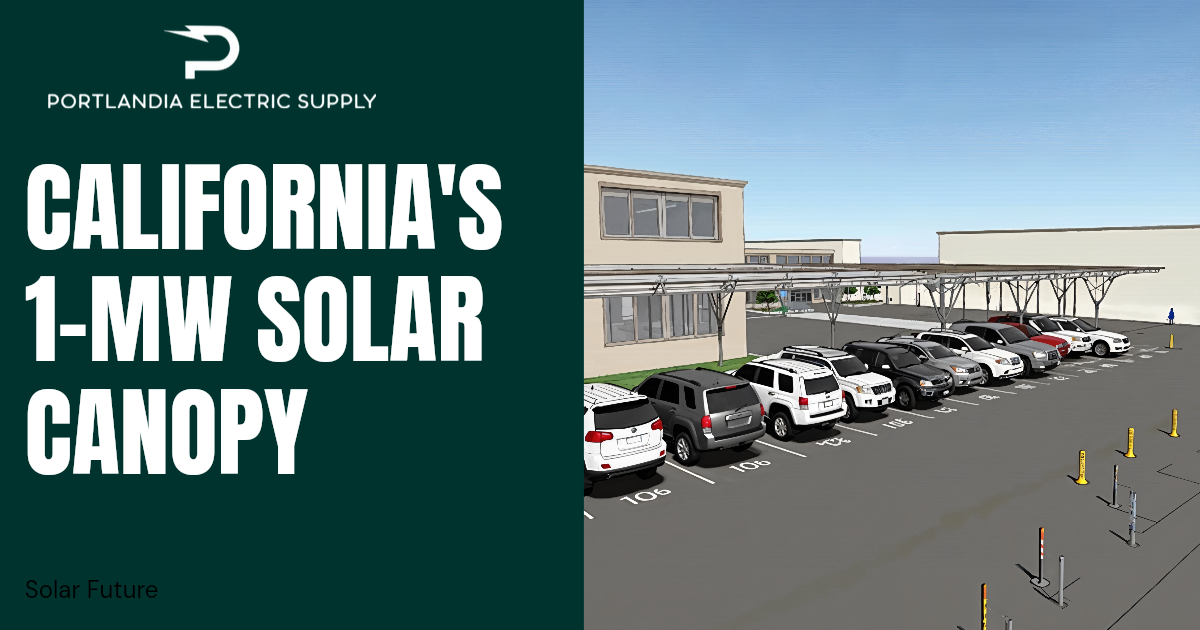Pioneering Solar Innovations: How a California College is Leading the Way with a 1-MW Solar Parking Canopy

In the pursuit of sustainable campus initiatives, a California college has embarked on an ambitious journey with its installation of a 1-MW solar parking canopy, setting a standard for educational institutions across the nation. This remarkable project not only harnesses the potential of solar energy innovations but also transforms the traditional parking lot into a center for renewable energy generation. As institutions contend with the increasing demands of environmental stewardship, this college’s endeavor exemplifies a practical and scalable approach to achieving sustainability objectives. By effectively integrating this 1-MW solar solution, the college showcases how academia can lead the charge in adopting innovative energy solutions, inspiring students, educators, and sustainability advocates alike. Join us as we delve into the technical and environmental impacts of this groundbreaking initiative and understand how it sets a precedent for future educational energy projects.
California College’s Solar Vision
The California college’s solar vision marks a bold stride towards sustainable campus initiatives, demonstrating how educational institutions can lead the way in renewable energy adoption. This section explores the motivations behind the project and introduces the innovative 1-MW solar parking canopy.
Driving Sustainable Campus Initiatives
Sustainable campus initiatives have become a priority for educational institutions throughout the United States, and this California college has taken a notable leap forward by executing a large-scale solar project.
The decision to pursue this ambitious project is driven by a commitment to reducing the campus’s carbon footprint and setting an example for other institutions. By integrating renewable energy into their infrastructure, the college exemplifies a proactive approach to addressing climate change.
Fullerton College, in collaboration with ForeFront Power, has completed this landmark project, illustrating how educational institutions can team up with energy providers to attain sustainability goals.
Introducing the 1-MW Solar Parking Canopy
At the heart of this sustainable initiative is the 1-MW solar parking canopy, a marvel of modern engineering and design. This innovative structure serves a dual purpose: generating clean energy and offering shade for parked vehicles.
The solar parking canopy covers a substantial portion of the campus parking lot, utilizing previously underutilized space. By transforming a conventional parking area into a power generation hub, the college maximizes land use efficiency.
According to Solar Quarter, the system is expected to produce approximately 1,500,000 kWh of clean electricity annually, significantly reducing the college’s dependence on grid power and lowering its carbon emissions.
Solar Energy Innovations in Academia
The implementation of solar energy solutions in academic environments is gaining momentum. This section examines how such innovations are transforming educational institutions and establishing new benchmarks in sustainability.
Transforming Educational Institutions
Solar energy innovations are transforming the manner in which educational institutions approach sustainability and energy management. These advancements go beyond mere power generation, offering multifaceted benefits to campuses.
By incorporating solar technologies, colleges and universities create living laboratories for students. These installations provide practical examples of renewable energy systems, enriching the educational experience in fields such as engineering, environmental science, and sustainability studies.
Moreover, BEI Construction notes that solar projects in schools can significantly reduce operational costs, freeing up resources for other educational priorities. This financial benefit makes solar adoption an enticing proposal for budget-conscious institutions.
Setting New Standards in Sustainability
The execution of large-scale solar projects, like the 1-MW parking canopy, sets new benchmarks for sustainability in academia. These initiatives elevate the standards for what educational institutions can achieve in terms of renewable energy adoption.
By demonstrating the feasibility and advantages of such projects, pioneering colleges inspire others to follow suit. This ripple effect contributes to a wider shift towards sustainability across the education sector.
Furthermore, these projects often foster partnerships with local utilities and energy companies, promoting collaboration between academia and industry. Such partnerships can lead to innovations in energy technology and management practices.
Impact and Future Prospects
The impact of this solar parking canopy extends well beyond immediate energy savings. This section examines the wide-ranging benefits of the project and its potential to inspire global energy solutions.
Benefits Beyond Energy Savings
The 1-MW solar parking canopy delivers a multitude of benefits that extend beyond mere energy cost reduction:
-
Environmental Impact: A substantial reduction in carbon emissions, contributing to cleaner air and a healthier local environment.
-
Educational Opportunities: Provides a real-world example for students studying renewable energy, engineering, and environmental science.
-
Community Engagement: Raises awareness about renewable energy among students, staff, and the local community.
-
Infrastructure Improvement: Offers covered parking, protecting vehicles from sun and weather while generating clean energy.
UC Santa Cruz reports similar benefits from their solar parking canopy project, highlighting the positive impact on campus sustainability goals and student engagement.
Inspiration for Global Energy Solutions
The success of this California college’s solar parking canopy project serves as an inspiration for global energy solutions. It illustrates how innovative thinking can transform everyday spaces into powerhouses of clean energy.
This project offers a replicable model for other institutions and organizations worldwide. By showcasing the feasibility and benefits of large-scale solar installations in urban settings, it encourages similar initiatives across various sectors.
Moreover, the project emphasizes the importance of collaboration between educational institutions, energy providers, and local communities in driving sustainable development. Such partnerships can accelerate the transition to renewable energy on a global scale.







Wonderful ♥️